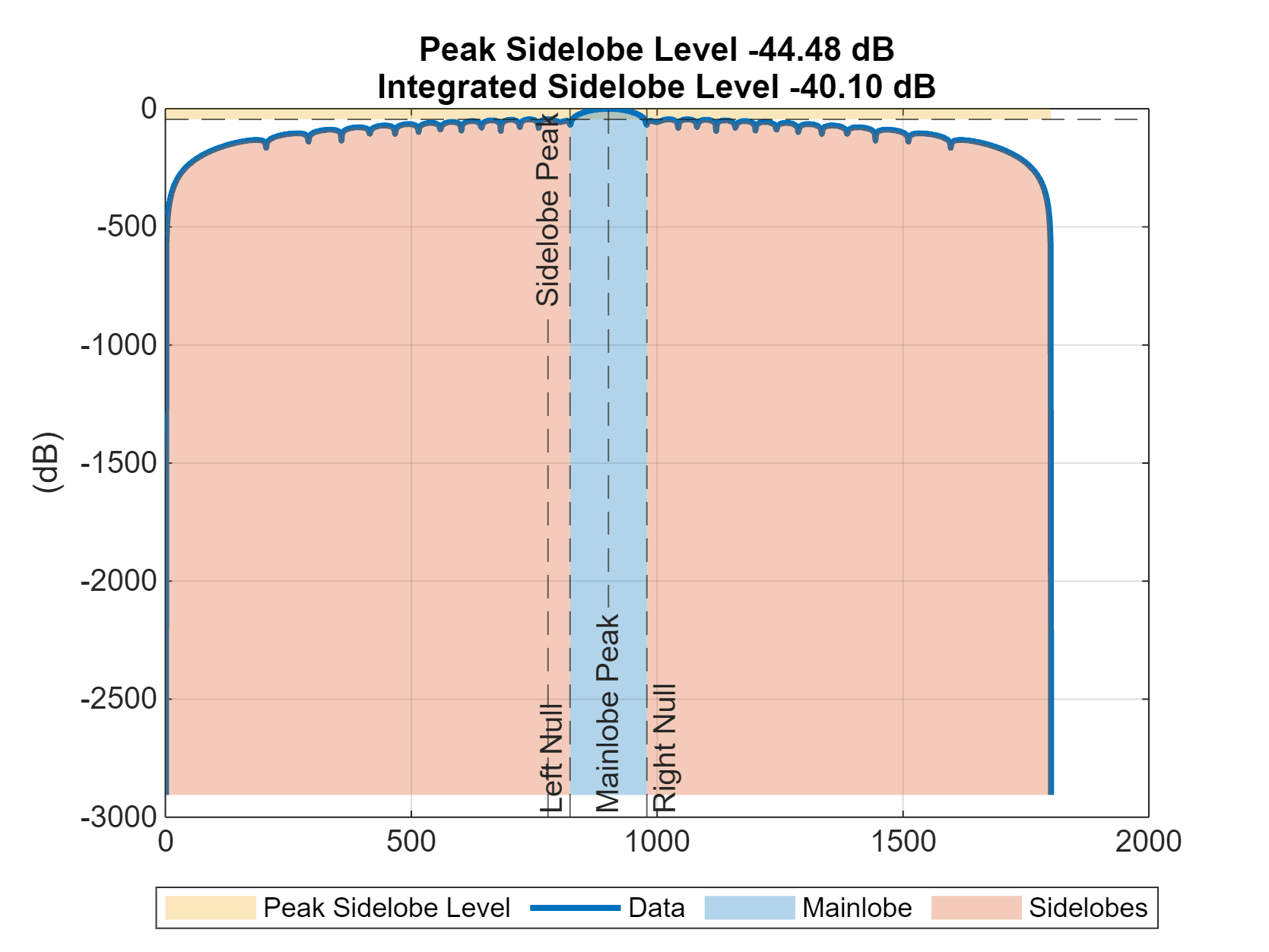sidelobelevel
Syntax
Description
sidelobelevel returns the peak sidelobe level of a set of
vector data that can represent, for example, autocorrelation functions, array beam patterns,
or matched filter output, or any data that can have a peak-and-lobe shape. The data must be
dB-scaled data. The function can optionally return integrated sidelobe levels.
psl = sidelobelevel(Y,SmoothingFactor=sf)sf. The
smoothing window size factor can range from 0 to 1. Smaller values result in less smoothing,
while values closer to 1 result in more smoothing. The default is 0 (no smoothing).
Smoothing utilizes a moving Gaussian-weighted window to reduce local variations in
Y improving accurate identification of the mainlobe and sidelobes in
the presence of noise and distortion.
sidelobelevel( produces a
plot of the input data, Y,___)Y, highlighting the estimated mainlobe and
sidelobe regions.
Examples
Input Arguments
Output Arguments
More About
Version History
Introduced in R2024b
